 Back to the Be Inspired Blog
Back to the Be Inspired Blog
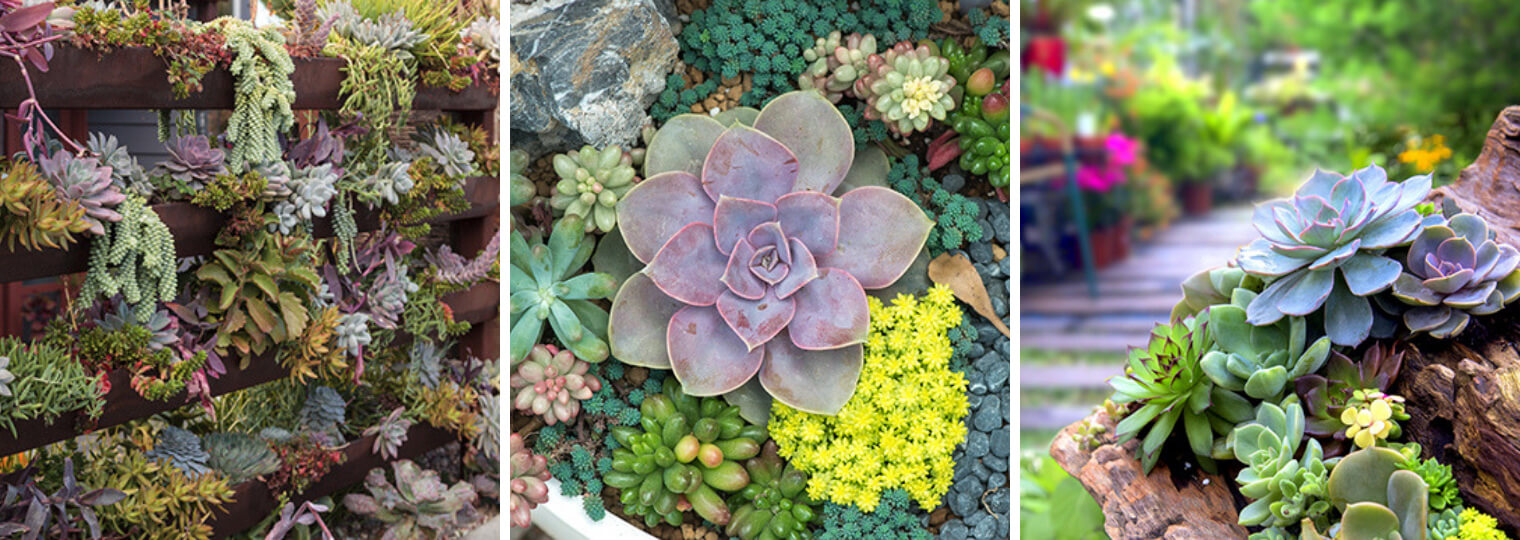
Grow Succulents For A Boost Of Color In Your Yard
The word succulent is most commonly applied to food as a descriptor of dishes that are juicy and tender. The botanical definition isn’t too far off from that; it means plants that store water in their leaves, stems or both. There are many different types and species of succulents with a fascinating range of colors and shapes.
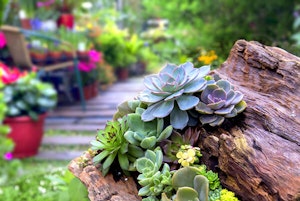
Succulents can tolerate prolonged drought (many for months and a few for years) and prefer bright light—but not always full, hot sun. Other than Antarctica, succulents can be found growing naturally on every continent on earth. California alone is native to nearly 180 different species.
Growing Succulents In Your Yard
Outdoors, succulents are popular as stunning single focal-point plants, durable ground covers for steep inclines, patio accents, or in groups of colorful combinations. Depending on the variety, they can also be used in living sculptures (fences, wreathes, etc.), brush fire defense and even home-grown burglar prevention.
There are three main considerations when growing succulents outdoors:
- Temperatures (winter and summer)
- Rainfall (amount and timing)
- Sunlight (intensity and duration)
You can accommodate them all by choosing the right plants for your area, preparing the soil for better drainage and protecting those that need it from hot mid-summer sun.
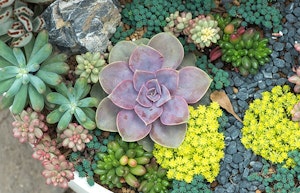
The Perfect Temperature for Succulents
Many popular garden succulents will tolerate mild freezes, even in the teens and lower. Frost-tolerant varieties include certain aloes, senecios, echeveria and graptopetala. Keeping container plants close to buildings will help protect borderline species from cold injury.
During a heat wave, if temperatures fail to fall below 90 degrees overnight, it is best to suspend watering all together or bring containers indoors. These high temperatures prompt the plants to keep their stomata closed, which prevents water loss. When temperatures are regularly below 90 degrees overnight again you may resume the normal watering schedule.
Sun for Succulents
In general, all succulents do best in the sun, and many will get leggy and weak without at least six hours of daily sun. Others get more colorful and produce flowers with eight or more hours of direct sun. A good guideline is to examine the foliage – the more colorful it is, the more intense the sun it can take.
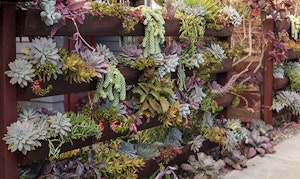
If you find that your succulents are being damaged by too much direct sunlight, shade them during the hottest part of the day with architecture or garden features like lattices, arbors, shade cloths or even large shade-providing trees.
During the winter, succulents in pots can be placed outdoors to encourage strong growth and enhance colors.
How Rainfall Impacts Succulents
While succulents can tolerate dry periods for an extended length of time, they will do better and be more likely to flower with regular water during the active growing season. Outdoor plants like opuntia, yucca, aloe, echinocereus, cylindropuntia, mammillaria, agave and delosperma species can survive in most arid or summer-dry landscapes on rainfall alone,. However, to truly thrive, they will need additional watering at least every few weeks.
Still, too much water is worse than not enough. Many gardeners keep outdoor succulents on the dry side during rainy weather to reduce the risk of root rot and to help them survive lower temperatures. This may mean covering them from rain or bringing any planters under a protected roof.

Preparing A Garden Bed For Succulents
Plant as early in the season as possible to allow each succulent as much time as possible to become established before the following winter or summer. Do be prepared to provide the additional protection they may need during that first year.
In most cases, the soil you plan to plant in will need amendment before it is ideal. This mostly means increasing water drainage by adding organic matter like compost, and up to 50 percent total volume with coarse sand, pumice or grit. Mix these into the top 6-8 inches of native soil.
Press the succulents into the dirt and compact the soil slightly around them as you go. Once all your succulents are planted, cover the remaining surface area with coarse sand or gravel. After allowing a day or two to settle, water the plants gently. Fertilize lightly in the spring with a low-nitrogen garden fertilizer.
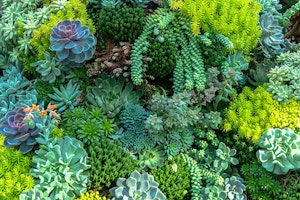
Talk To SummerWinds About Your Succulents
If you have more questions about succulents, or want some specific advice on which varieties might be best in your yard, stop in to any of our five locations to speak with one of our gardening experts. We carry a wide variety of plants, planters, soils and fertilizers for all your succulent needs.

